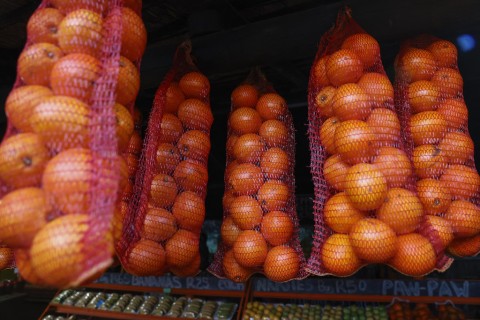South African Property in 2025: What Q1 Reveals About the Road Ahead
The South African property market began 2025 on a cautiously optimistic note. With inflation easing, interest rates holding steady with potential modest declines, and policy shifts making entry more affordable, the first quarter brought fresh energy into a market that showed resilience but little momentum in 2024. Drawing from Lightstone, BetterBond, and FNB data, Paul Stevens, CEO of Just Property, examines where the sector stands today and what we can expect from the rest of the year.

Last year, the market was shaped by economic pressure and buyer hesitancy. The FNB House Price Index recorded just 0.3% year-on-year growth in October, down from 0.5% in September. Gauteng, the country’s largest housing market, saw prices decline by 2.6%. Coastal areas in the Western Cape bucked the trend, buoyed by lingering semi-gration demand. Mortgage volumes began to pick up in Q4, with BetterBond noting a 6.6% year-on-year increase in applications and an 8.1% rise in home loans granted.
Rental markets outperformed expectations. National average rent grew by 4.8% year on year in Q3 2024, with the Western Cape leading at 9.3%. Tenant affordability improved, arrears dropped to near-record lows, and average rent remained below 30% of household income.

Lightstone’s Q1 2025 transfer data offers the clearest picture yet of post-pandemic market normalisation. The High Value segment (R700 000 – R1.5 million) accounted for the largest share of activity: 33.8% of volume and value. The Mid Value segment (R250 000 – R700 000) followed closely at 32.9% by volume, although its share of value was lower at 18.3%, reflecting affordability constraints.
First-time buyers remained active in these bands, with 16.9% buying into the High Value category and 16.4% into the Mid Value range. Notably, average spend among first-time buyers was R1.2 million in the High Value band and R557 000 in the Mid Value band, showing a strong middle-market entry trend. A small portion also bought into the Luxury segment (R1.5 million – R3 million), with an average spend of R2.2 million.
Regulatory shifts are supporting this momentum. From 1 April 2025, properties priced under R1.21 million were exempt from Transfer Duty Tax. This change, announced in the February Budget Speech, eases upfront costs for many buyers.

While the repo rate remained unchanged at 11% in the 20 March monetary policy announcement, the Deeds Office implemented a revised fee structure from 1 April, which includes a new lodgement fee (R50 per deed or document) and the requirement that all fees are now to be paid in advance.
If inflation continues to slow, rate cuts may resume, enhancing affordability and spurring further buyer activity.
Recent announcements from the United States regarding increased tariffs on a range of imported goods could have indirect consequences for the South African property market. Should these tariffs lead to disruptions in global supply chains or increased costs for building materials – particularly those with components sourced internationally – developers may face tighter margins and delayed project timelines. Higher input costs could also place upward pressure on the pricing of new residential and commercial builds, especially in the mid to high-end segments. Investors and developers would do well to monitor this closely, particularly if their projects rely on imported finishes, equipment or construction technologies.

Here are my key takeouts for buyers, investors and developers:
With Q1 providing a solid start and policy adjustments enhancing affordability, 2025 may be the year the South African property market transitions from recovery to renewed growth.
You may also like...
Diddy's Legal Troubles & Racketeering Trial

Music mogul Sean 'Diddy' Combs was acquitted of sex trafficking and racketeering charges but convicted on transportation...
Thomas Partey Faces Rape & Sexual Assault Charges

Former Arsenal midfielder Thomas Partey has been formally charged with multiple counts of rape and sexual assault by UK ...
Nigeria Universities Changes Admission Policies

JAMB has clarified its admission policies, rectifying a student's status, reiterating the necessity of its Central Admis...
Ghana's Economic Reforms & Gold Sector Initiatives

Ghana is undertaking a comprehensive economic overhaul with President John Dramani Mahama's 24-Hour Economy and Accelera...
WAFCON 2024 African Women's Football Tournament

The 2024 Women's Africa Cup of Nations opened with thrilling matches, seeing Nigeria's Super Falcons secure a dominant 3...
Emergence & Dynamics of Nigeria's ADC Coalition

A new opposition coalition, led by the African Democratic Congress (ADC), is emerging to challenge President Bola Ahmed ...
Demise of Olubadan of Ibadanland
Oba Owolabi Olakulehin, the 43rd Olubadan of Ibadanland, has died at 90, concluding a life of distinguished service in t...
Death of Nigerian Goalkeeping Legend Peter Rufai

Nigerian football mourns the death of legendary Super Eagles goalkeeper Peter Rufai, who passed away at 61. Known as 'Do...



